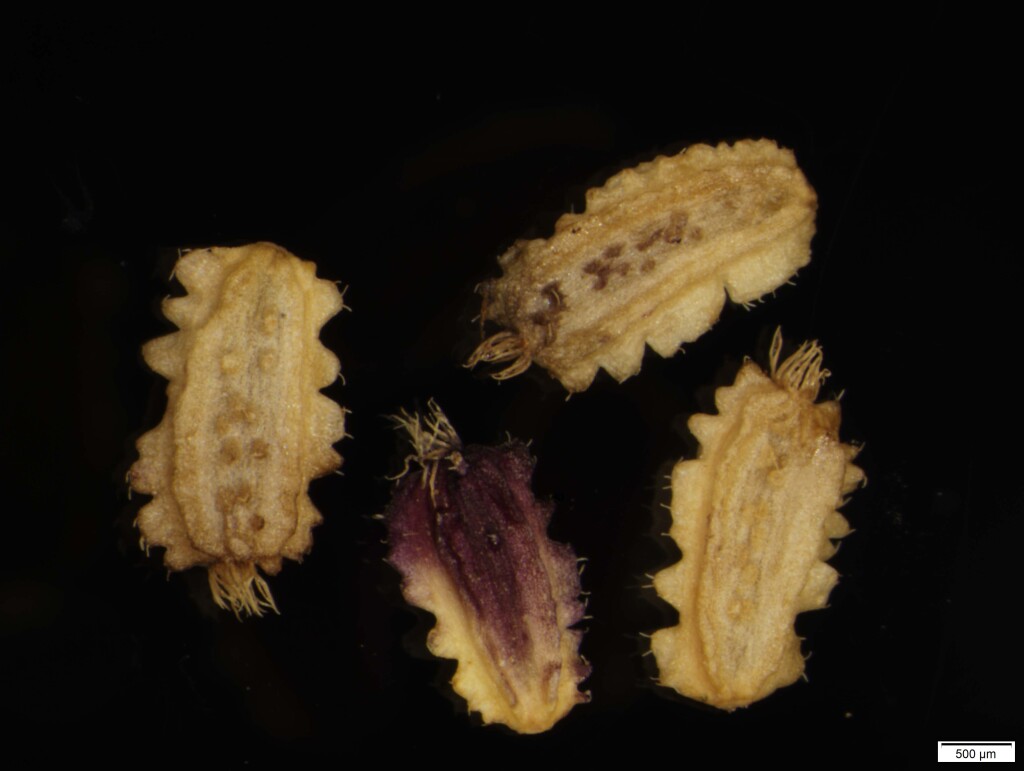Brachyscome salkiniae
P.S.ShortSuckering, prostrate to weakly ascending or shortly erect herb, branches to c. 30 cm long. Leaves basal and cauline or sometimes predominantly in a basal or near-basal rosette, glabrous or with occasional and easily overlooked stalked short glandular hairs mainly on younger growth; basal leaves spathulate or linear-oblanceolate, 2–8 cm long, 8–21 mm wide, teeth or lobes terminating in a blunt mucro, 5–14; upper leaves similar but smaller, occasionally undivided and oblanceolate or linear-oblanceolate. Flowering branches glabrous or very sparsely glandular-hairy; capitula c. 5–7 mm diam.; bracts 12–25, 1-seriate or in 2 ill-defined rows, c. equal, obovate or lanceolate, 2–4.7 mm long, 0.5–1.8 mm wide, subobtuse to acute, glandular-hairy on margins and midrib, mainly green and herbaceous but with narrow, hyaline margins and apex; ray florets (12–)17–29, 7.6–11.5 mm long, mauve, lilac or pink; disc florets c. 50–60, yellow. Cypselas obovate to oblanceolate, 2.1–3.4 mm long, 1.0–1.3 mm wide, mostly uniformly yellow-brown, sometimes purplish at apex, ridges on lateral faces not swollen but often manifestly flange-like; lateral faces tuberculate, curved hairs on tubercles; ribs winged; wings entire or with 1–5 usually shallow notches, 0.1–0.5 mm wide, with biseriate hairs; pappus 0.1–0.4 mm long, bristles joined at base. Flowers mainly Sep.–Jan.
GipP, CVU, EGL, EGU, HSF. In forests and woodland on sandy or loamy soil, often on river banks and flats, throughout East Gippsland and extending west into the Latrobe Valley near Moe.
This species has previously been referred to as Brachyscome aff. formosa 'entity 1' (Salkin et al. 1995) and along with Brachyscome willisii was included by Willis (1973) under the name B. angustifolia var. heterophylla (Benth.) G.L.R. Davis, a taxon restricted to New South Wales (Short 2009).
 Spinning
Spinning
